Kia’s Small Crossover Fuel Economy King Gets Even Better
It may take a few decades, but there will come a time when more new cars are powered purely by electricity than gasoline. The bridge between that point will be the plug-in hybrid electric vehicle (PHEV), a technology that many auto manufacturers are adding to their model line-up. Case-in-point—the 2018 Kia Niro PHEV.

Kia’s first foray into this arena was the 2017 Optima PHEV. New for 2018 is the Niro PHEV, which joins its sibling the Niro Hybrid. Clean Fleet Report has reviewed the Niro Hybrid (reviews at the end of this story) and found Kia’s self-described “urban crossover hybrid vehicle†jumped to the top of hybrids for design, ride, comfort and value. With the addition of the plug-in Niro Hybrid, Kia has only increased the reasons consumers should be looking at this car.
Drivetrain
The Niro PHEV has the same specifically engineered parallel hybrid powertrain as the Niro Hybrid—a 1.6-liter gasoline engine and a AC synchronous permanent magnet motor. The total system 139 horsepower and 195 pounds-feet of torque is the same for both cars, but the 26 miles of pure electric driving in the Niro PHEV makes a big difference in what you will get out of the car. Mated to a smooth shifting six-speed dual-clutch transmission (DCT), the torque made highway ramp sprints and passing 65+ mph big rigs easy.

There are four driver-selectable drive modes of Eco, EV, Hybrid and Sport. Eco is the default setting and will deliver the best fuel economy. It drives similar to the Hybrid mode. EV means you are only using electricity for up-to 26 miles. But for the most fun, opt for Sport mode, where there are quicker transmission responses, and a bit more spirited, albeit less fuel-sipping, driving.
The hybrid system’s 8.9-kWh lithium-ion polymer battery can be replenished through charging. It takes three hours with a 240V, Level 2 charger or overnight with a 120V regular household outlet. When braking or coasting, the regenerative braking system converts kinetic energy into electric energy and stores it in the battery. This process can be viewed on a dash gauge, where you can watch the power flow into and out of the battery and electric motor. The pedal feel on hybrids can be grabby at times, requiring a learning period to get it right. Not so on the Niro, where the regenerative braking required little pedal modulation and provided a confident feel. Missing on the Niro PHEV is an on-board generator that replenishes the battery when driving in gasoline/hybrid mode. Also, it lacks a “Hold†to conserve battery charge so it can be used when you want it.
The EPA fuel economy rating running as a hybrid is 48 mpg city/44 highway/46 combined. But adding together the gasoline and electricity, the EPA estimates 105 MPGe (Miles Per Gallon Equivalent). MPGe measures how far a plug-in car can travel on electricity (33.7 kWh) with the same amount of energy as is contained in one gallon of gasoline. In 650 miles of 60-percent highway/40-percent city driving throughout Southern California, Clean Fleet Report achieved an average of 62.8 mpg.
We accomplished this gaudy number by plugging-in the Niro PHEV at every opportunity, taking advantage of the idle stop/start, driving conservatively in hybrid and all-electric mode, even up to 65 mph. Because this number was so much higher than the EPA estimate, we contacted Neil Dunlop, product & technology communications manager at Kia, to get confirmation that our results were feasible. He confirmed that it was and that Niro PHEV owners have reported even higher numbers.
It is important to note that fuel economy reported by Clean Fleet Report are non-scientific, representing the reviewer’s driving experience in our reviewer’s city. If you live in cold weather, high in the mountains or spend time in the city or stuck in rush hour traffic, then your numbers may differ.
Driving Experience: On the Road

The front-wheel drive 2018 Kia Niro PHEV weighs in at 3,391 pounds. The well-distributed weight is due to the under-seat battery placement, creating a low center of gravity and resulting
in very good driving dynamics. The motor-driven power steering was a bit light, but tuned for good road feel. Maneuvering in town, including parking, was easy. The front MacPherson struts with stabilizer bar and gas shocks plus the rear multi-link suspension with twin tube shocks delivered a smooth and stable ride. Tire and wind noise could be hidden a bit better, but the engine in gasoline mode was quiet. Of course, when running on electricity only, there is no engine noise because no engine is running. Seems obvious, but it needed to be said.
The 16-inch alloy wheels and 205/60R Michelin low rolling resistance tires deliver handling that was direct with little body roll. While there is nothing sporty about the Niro PHEV, it had a very respectable zero–60 time of nine seconds.
As previously mentioned, the regenerative braking system has four-wheel disc brakes with ABS and brake assist. The stops were straight and true, with no brake fade, nor noticeable hybrid braking whine.
Designed with a Clean Slate
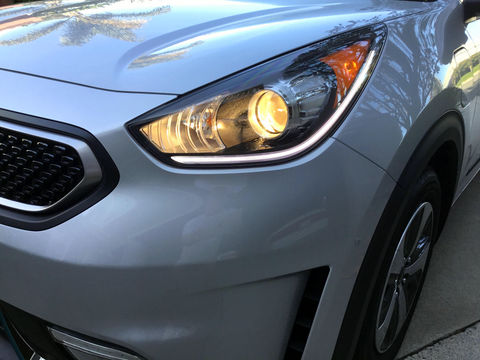
Clean Fleet Report’s review of the 2017 Niro Hybrid went into detail on the exterior design, which continues over to the 2018 Niro PHEV. Then and now, we are impressed with the Niro as it is stylish and uncluttered, with excellent sight lines for the driver. We also like that Kia did not design the Niro to look like a hybrid car, as in it isn’t shaped like a wedge of cheese or has unnecessary scoops and cladding.
The Niro has incorporated Kia’s signature tiger nose grill that runs edge-to-edge on the front end, leading to the swept back projector beam headlights. LED daytime running lights and fog lights, located in the bottom fascia, complete the front end design. The side profile draws a nice line to the A pillars, leading to a gently sloping roof with rack rails, a shark fin antenna and an integrated black spoiler over the rear hatch window. The narrow horizontal LED taillights and smooth-surfaced hatch finish off the attractive rear. Only some blue accents differentiate the PHEV from the Hybrid Niro.
Welcoming Interior
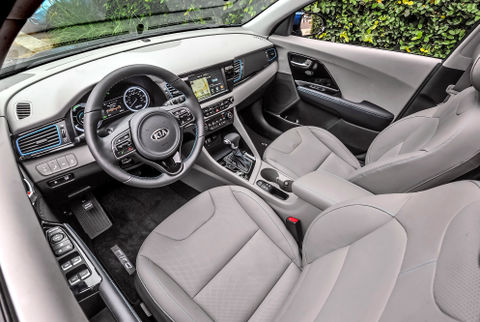
In our earlier review of the 2017 Niro Hybrid, we were impressed with its spacious cabin; our impressions of the Niro
PHEV are no different. Clean Fleet Report tested the Niro PHEV LX trim level with cloth seats. The front seats were supportive and 6-way power adjustable. We like that the outlook on the road is higher than a sedan (6.3-inch ground clearance), but not as high as an SUV. The rear 60/40 split-folding rear seat has a center armrest with cup holders, and is best suited for two adults. The flat load floor provides for extra cabin space and legroom. Rear storage features a large flat carpeted surface, made even larger when the rear seat is folded flat. An added bonus is a concealed storage compartment beneath the cargo floor, where an optional sectioned storage tray makes keeping loose items secure and separated.
The center dash in our Niro PHEV came with a 7.0-inch touchscreen housing Kia’s UVO eServices infotainment system, which included Android Auto and Apple CarPlay. The six-speaker sound system plays AM/FM/CD/MP3/AUX and SiriusXM (with a 90-day introductory subscription). The Bluetooth worked very well for voice recognition; most of the entertainment is controlled by switches on the leather-covered steering wheel. Big thanks to Kia designers for the knobs and wheels to control the radio and dual-zone automatic climate control.
Safety, Pricing and Warranties
The 2018 Kia Niro PHEV comes with an extensive list of standard and optional safety features. Since some of the features are only available on higher trim levels and through packages, we advise getting your car with as many advanced driver technology and safety features as possible.
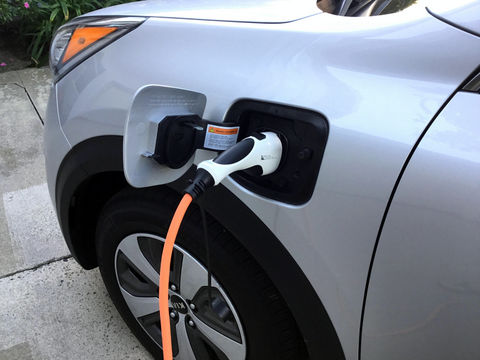
Features available on the Niro PHEV include seven airbags, four-wheel power disc ABS braking system with brake assist, forward emergency braking and collision warning, stability control, smart cruise control, blind spot monitoring, park assist with front and rear sensors, vehicle stability management, traction control, hill launch assist, tire pressure monitoring system, engine immobilizer, lane departure warning and rear cross traffic alert.
The 2018 Kia Niro PHEV comes in three trim levels. MSRP for each without options or the $940 destination charge:
- LX $27,900
- EX $31,500
- EX Premium $34,500
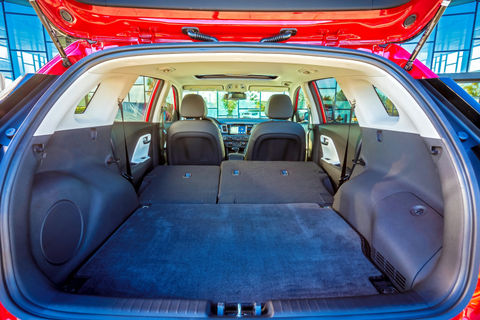
With the hatch and fold-down seats, you’ve got flat-out room
The 2018 Kia Niro PHEV comes with these warranties:
- Powertrain – 10 years/100,000 miles
- Battery – 10 years/150,000 miles (CA, OR, WA, NY)
- Battery – 10 years/100,000 miles (Remaining states)
- Basic – Five years/60,000 miles
- Roadside Assistance – Five years/60,000 miles
- Corrosion – 10 years/Unlimited miles
Observations: 2018 Kia Niro PHEV
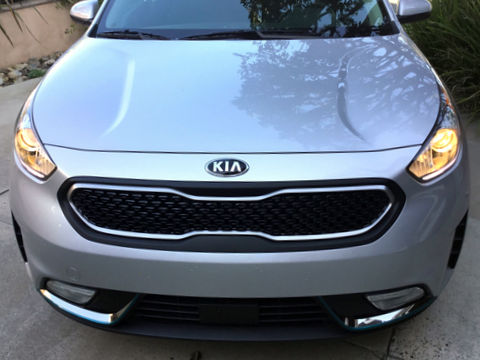
No mincing words here: the 2018 Kia Niro PHEV is a near perfect small wagon/crossover. The fuel economy is stellar, even if yours is closer to the EPA estimate than our test results. The
design doesn’t scream for attention, which is just fine for the discerning buyer who wants a clean, classic looking car from a company offering the best warranty on the market.
Our Wish List of an on-board charger while driving, and a Hold feature to conserve your battery charge, are minor items and should not present an obstacle to your owning a very nice, modern car. If you are interested in getting at or above 50 mpg in a well-built, attractively designed, comfortable-to-drive station wagon/compact crossover, go check-out the Kia Niro PHEV. We know you will not be disappointed.
Whatever you buy, Happy Driving!
In order to give you the best perspective on the many vehicles available, Clean Fleet Report has a variety of contributors. When possible, we will offer you multiple perspectives on a given vehicle. This comes under SRO-Second Road Test Opinion. We hope you’ll enjoy these diverse views–some are just below—and let us know what you think in comments below or at publisher@cleanfleetreport.com.
Road Test: 2018 Kia Niro PHEV (Steve’s view)
Related Stories You Might Enjoy: More Kia Tests & PHEV Alternatives
News: Kia Niro EV Showcased
Road Test: 2017 Kia Cadenza
News: 2018 Kia Niro Plug-in Hybrid Introduced
Flash Drive: 2018 Kia Rio 5-Door
Road Test: 2017 Kia Niro FE
Road Test: 2017 Kia K900
News: Hyundai-Kia’s Future Is Electric Powertrains
Road Test: 2017 Kia Niro Hybrid
Road Test: 2017 Kia Optima PHEV
Road Test: 2017 Kia Forte
Road Test: 2017 Kia Soul ! (Exclaim)
Other PHEVs
Road Test: 2018 Honda Clarity Plug-in Hybrid
Flash Drive: 2017 Ford Fusion Energi
Flash Drive: 2018 Hyundai Ioniq PHEV
Road Test: 2017 Chrysler Pacifica Plug-in Hybrid
Disclosure:
Clean Fleet Report is loaned free test vehicles from automakers to evaluate, typically for a week at a time. Our road tests are based on this one-week drive of a new vehicle. Because of this we don’t address issues such as long-term reliability or total cost of ownership. In addition, we are often invited to manufacturer events highlighting new vehicles or technology. As part of these events we may be offered free transportation, lodging or meals. We do our best to present our unvarnished evaluations of vehicles and news irrespective of these inducements.
Our focus is on vehicles that offer the best fuel economy in their class, which leads us to emphasize electric cars, plug-in hybrids, hybrids and diesels. We also feature those efficient gas-powered vehicles that are among the top mpg vehicles in their class. In addition, we aim to offer reviews and news on advanced technology and the alternative fuel vehicle market. We welcome any feedback from vehicle owners and are dedicated to providing a forum for alternative viewpoints. Please let us know your views at publisher@cleanfleetreport.com.

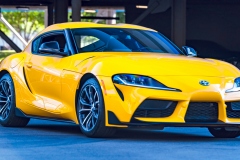
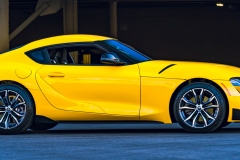

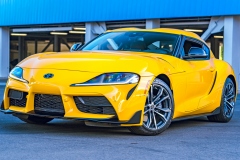
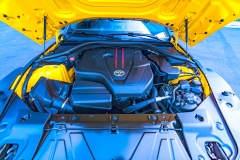





11 thoughts on “Road Test: 2018 Kia Niro Plug-in Hybrid”